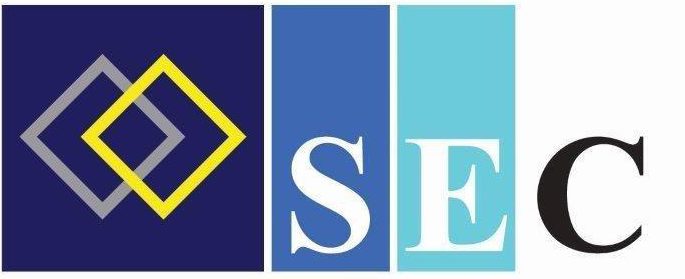A. BASIC FACTS ABOUT SECURITIES AND THE STOCK MARKET
1. What is a stock exchange?
A stock exchange is a market where the securities of companies and other institutions are bought and sold, i.e. traded.
2. What are securities?
Securities are instruments for raising finance by the shareholders of a company. They come in two types-equity securities and debt securities. Equity securities, which are also known as shares, give one part-ownership of a company and with it the right to a share of a company’s dividends. Debt securities represent a debt by an organization. They can be issued variously by companies and governments both local and central. They do not give their owners ownership of the organization. They are usually issued for a fixed term and the amount of capital represented by them has to be paidback to their owners at the end of the debt security’s term. Debt securities usually also carry an interest charge which is paid to their holders at specified periods during the debt security’s term.
3. What is trade?
A trade is the action of transacting in securities on the stock exchange. A trade is effected when buyers and sellers orders match at a given price.
4. What is a primary market?
Primary market offerings of securities occur when securities are offered for sale to the public for the first time.
5. What is meant by secondary market trading?
Secondary market trading of securities occurs when shares that have been bought through a primary market offering are traded on a stock exchange.
6. What law governs the operation of a stock exchange?
The operations of the stock exchange are governed by the Securities Act, No. 38 Cap 354 of the Laws of Zambia. The implementation of the Securities Act is the role of the Securities and Exchange Commission (SEC) Zambia.
7. What is the proof of ownership of securities?
There is what is known as a Contract Note (CN). It is issued after a trade has settled on the stock exchange. The CN is produced by the buyer’s stockbroker who then hands it over to the buyer of a security.
8. What is the Central Share Depository?
The Central Share Depository (CSD) is a computerized central point in which all the shares of listed and quoted companies and all listed debts securities are held. It is a type of “warehouse” of records for the holders of all instruments that are tradable on the LuSE. An account is opened for every holder of the instrument. On that account is the name of the instrument, the name of the holder of the instrument, a record of how much of a given instrument an individual owns and when the instrument was purchased.
9. What is meant by a listed company?
A listed company is one which has a presence on the top tier of the stock exchange, the “listed tier”. The listed tier is composed of public limited companies (Plcs) that have met the listing requirements.
10. What is meant by a quoted company?
A company that has registered its issued equity securities with the Securities and Exchange Commission (SEC) will automatically be quoted on the stock exchange. Although a quoted company has not met the requirements to be listed, it is expected that that this company will work towards being a listed company.
11. What is an ISIN Code?
Each security on the stock exchange is assigned an International Security Identification Number (ISIN) which identifies each security uniquely. This is one of the features of a modern stock exchange.
12. What is an Initial Public Offering?
An Initial Public Offering (IPO) occurs when a company offers its shares for sale to the public on the stock exchange for the first time. When a company decides to have an IPO it is said to be “Going Public”. Going Public describes the process through which a company converts itself from a private limited company to a public limited company (Plc) and subsequently sells its shares to the general public via an IPO over a licensed stock exchange.
13. What are listed debt securities?
In order to be listed, debt securities must have first been registered with the SEC Zambia. After the debt securities have been offered and bought on the open market, the listing application is formally applied for after which the debt securities are indicated on the stock exchange listed debt securities tier.
14. What are quoted debt securities?
As with listed debt securities, quoted debt securities must first be registered with the SEC Zambia. However, issuers of these debt securities never formally apply for listing on the stock exchange. As such, they remain on the quoted tier.
B. HOW TO INVEST IN SECURITIES
15. In order to invest in securities that are listed or quoted on the stock exchange, what is the first step an investor must take?
Having decided to invest in securities that are listed or quoted on the stock exchange, investors must choose a stockbroker.
16. What is a stockbroker?
A stockbroker is a firm that is licensed by the SEC Zambia to buy and sell securities on the stock exchange on behalf of investors. To start the process of investing, the stockbroker will usually request the investor to open an account with them.
17. What are the requirements for opening an account with a stockbroker?
In order to open an account with a stockbroker you will be required to produce the following:
A National Registration Card/Passport
A document showing proof of physical address, e.g. a lease agreement with your landlord
Agreement with a landlord, title deeds to a property
Two passport size photos
18. Is a stockbroker a bank?
No! Any monies collected from investors are held separately from the stockbroker’s own funds.
19. What are the broker charges for transacting on the stock exchange?
The stock exchange has a guide commission charge of 1.375% of the value of the transaction. For big transactions, the amount can be negotiated. When investing a small amount, you must weigh up carefully if the amount you invest can absorb the commission. For instance, if you want to invest K20 and the minimum brokerage commission is K10, then what you will end up investing is actually K10because the stockbroker will automatically deduct their commission. This will thus effectively reduce the amount you invest by half. If you invest K100 the commission will be K1.38 and if the minimum commission is K10 you will pay K10.
20. After opening an account with a stockbroker for the first time, what happens next?
The stockbroker will advise you on which shares are doing well. You can also choose what you want to invest in. You will fill out a “Buy Order”. By filling out the Buy Order Form you are authorizing the broker to look for securities you wish to purchase on the stock exchange on your behalf.
21. What happens if the broker is successful in finding me the securities I want?
Once this happens, the transaction shows as a trade on the stock exchange. However, if you are buying shares you only acquire formal ownership after three days because the transaction must first be cleared through the exchange systems. If you are buying debt securities, the transaction can clear on the same day.
22. What is the “T +3” trading system?
The “T+3”trading system is the three day process required for a transaction involving shares to settle on the stock exchange. Literally translated, it stands for “Transaction + 3 business days”.
In the case of debts securities, “T+0”is the trading system. In other words, the transaction settles on the same day as it takes place.
23. When is the stock exchangeOpen for Business?
Trading occurs on business days Monday to Friday excluding public holidays for 2hours continuously from 11:00 to 13:00 hours.
C. BENEFITS OF INVESTING IN STOCK MARKET INSTRUMENTS
24. How safe is my investment in stock exchange instruments?
All companies that have their securities listed or quoted on the stock exchange are required to publish in the national print media, information that can materially affect the value of the price of one’s securities. Failure to publish information that can materially affect a company’s share price in the national press can result in severe penalties for the directors and management of a company.
25. How does one benefit from investing in shares?
There are two principal ways in which a party benefits from investing in shares. The first is through the payment of a dividend, whilst the second is via the price appreciation of the shares that are bought, the share’s capital gain. Taken together, these two factors determine your return on holding shares in a company. If for example you bought a share for K10 and the share price has risen to K12 and you have received dividends worth K 1 from the company that issued the shares, then your total return from holding the share is 30%- the K2 (price appreciation) + K1 (dividend)/K10 (price paidfor the share).
26. What is a dividend?
A dividend is usually a cash payment to the shareholders of a company. It is drawn from the cash reserves that a company has at the end of the year. Sometimes dividends can be issued by companies in other forms such as bonus shares.
27. How are dividends divided up among a company’s shareholders?
Dividends are divided up among ordinary shareholders according to how many shares they own in a company. If for example a company pays dividends worth K1,000and an investor owns 10% of a company’s shares, then that investor will receive dividends worth K100-10% of K1,000.
28. How often does a company pay dividends to shareholders?
This is entirely up to the directors of the company and is dependent on how much free cash the company has. Generally though, most companies pay out dividends at least once a year. If a company has been operating favourably, it sometimes pays out dividends twice a year-usually after every six-month period. A dividend that is paid out during the course of a company’s operating year is known as an interim dividend. A dividend that is paid out after the close of a company’s Financial Year is known as a final dividend.
29. Are dividends taxed?
Yes! Withholding Tax (WHT) of 15% is payable on dividend income to Zambia Revenue Authority (ZRA). The amount is usually deducted at source by the paying company. However, to encourage individuals to invest in shares Government waived WHT on dividends payable to individuals by listed companies. If for instance a person received dividends worth K100 what will actually be paid to that person will be K100 (Before this waiver of WHT it would have been K85 because K15 (15% of K100) would have been deducted by the paying company to pay ZRA).
30. What is capital gain/loss?
Capital gain/loss is the price appreciation /depreciation in the value of the shares held by an investor. It is the difference between the price at which an investor bought the shares and what the shares are worth today. If for example the price of a share was K10 when an investor bought it and it is worth K15 today, then the person who bought the shares has enjoyed a capital gain of 50% (K15-K10=K5)/ K10. If however the price of the share has fallen to K5 then the investor that bought the shares at K10 has netted a capital loss of 50% (K5-K10= -K5)/K10
31. Is capital gain taxed?
No! There is absolutely no tax on capital gain in Zambia.
32. What recourse do I have if I feel that my interests as a share investor are not being protected?
You can lodge a complaint with the SEC Zambia. The SEC Zambia is empowered by the Securities Act to ensure that the interests of investors are adequately protected.
D. MONITORING YOUR INVESTMENT
33. How do I monitor my investment?
It is very easy to keep track of one’s investments on the stock exchange. Closing share prices can be obtained freely from the stock exchange or its website. They are also aired daily on TV.
34. What is dividend per share (DPS) and how is it calculated?
Dividend per share (DSP) is the dividend paid per each company share. It is calculated by dividing the dividend paid by a company by the total number of shares a company has in issue. If for example a company has decided to pay a dividend of K1,000,000 and it has 500,000 shares in issue, then its DPS is K1,000,000/500,000 shares = K2/share. It must be noted that DPS takes into account all of the dividends paid by a company during the Financial Year.
35. What is the price/earnings (p/e ratio) and why is it a useful tool for monitoring one’s investments in shares?
The p/e ratio is the result of dividing the share price of a company by its earnings per share (EPS); EPS is arrived at by dividing a company’s profit after tax by the number of shares a company has in issue. If for example, a company has made a profit after tax of K1,000,000 and has 1,000,000 shares in issue then its EPS=K1. If the share price of the same company is K5 on a given trading day, then the p/e ratio of the company is 5.
The p/e ratio is officially defined as the payback period from investing in a company’s shares. However, it can also be used as a measure of whether one’s investment is undervalued, valued correctly or overvalued. In the Zambian context, p/e ratios of 10-12 are considered about right for the stock market. If therefore the p/e ratio is less than this amount, it may be a good idea to hold onto a share because its value may rise soon. If it is greater than this amount, it may be worthwhile to consider selling the shares because they may fall in price in future on account of being overvalued. However, investors should consult their broker before making this decision.
36. What is divided yield and how is it calculated?
Dividend yield (DY) is the dividend return that one obtains from holding a share at a given share price. It is calculated in percentage terms. It is arrived at by dividing DPS by a company’s last share price. If for instance a company paid a dividend of K10 and its last reported share price was K100, then its DY will be reported as being 10%.
37. How is the return on a debt security calculated?
The return on a debt security-also known as its yield-is arrived at by adding the difference between its face value and its sale price to its coupon/interest rate then dividing that sum by the debt security’s sale price. For example, if a debt security had a face value of K100 and a coupon rate of 10% and one paid K98 for it,i.e. bought it as a discount of K2, one’s yield for the debt security would be:
2 + 10 / 98 = 12/ 98 =12.2%
“K2”is the difference between the face value and what was paid for the debt security, i.e. K100-K98, 10% is the rate of interest on the debt security and K98 is what was paid for the debt security.


